-
Posts
472 -
Joined
-
Last visited
Content Type
Profiles
Forums
Gallery
Events
Posts posted by Richard Dunn
-
-
6 hours ago, rshousha said:
I'm glad you haven't sent the frames above the level of the deck. Once the hull is planked, she'll have to look like she has steel frames; lots of soldering!
About that
what I have planned for the Foredeck is to laminate the deck substrate with its camber out of 2 or 3 layers of .4mm ply over a form the after end is housed in the heads and its forward end in the knightheads and its sides rebated into the bottom of the main rail which becomes the margin plank, therefore the deck is strong and not needing to be supported by frames at all. this means styrene can be used to create the framing seen under.
of course the samson posts and pillars will offer support though but the planking can be reduced in thickness to take up the thickness of the substrate.
2-3 layers of this .4mm 3 ply is very very stiff when laminated with epoxy, its surprising
A couple more shots of the forward longitudinals fitted, keep in mind they need to be clamped down flush with beams.
Also the hatch coamings are not fitted yet, I have not cut them yet.
- AnobiumPunctatum, rshousha, ccoyle and 6 others
-
 9
9
-
8 hours ago, No Idea said:
The accuracy of your bulkheads is CAD perfection its almost a shame to cover them up.
Thank you,
The aft end is even nicer, hopefully by the end of next weekend, Christmas day I will be able to carve the rabbet and assemble the frames for good.
- mtaylor, Scottish Guy and druxey
-
 3
3
-
- GrandpaPhil, No Idea, druxey and 7 others
-
 10
10
-
Nearly all the forward frames are fitted now.
Note the fair line of the main deck along the sheerline, it's a pretty good indication of the accuracy.
It's looking less and less likely I will make this a kit, as I suspected it's too large for most, I had a number in my head of 10-20 requests.
I might look at selling the cad files so it can be cut by the buyer.- GrandpaPhil, Scottish Guy, ccoyle and 5 others
-
 8
8
-
Starting to test fit all the parts and dry assemble.
nothing is glued or forced together so a few little gaps but its fairly good, I am happy
Stern deadwood and sternposts
The Forward Deadwood minus the Stem post and cutwater
Frames 70 to 88 dry fitted and decks fitted for checks
And lastly a straight brass round to check alignment fore and aft of mast holes.
Once I have done this for all the frames its time to cut the rabbet and start gluing
- GrandpaPhil, scrubbyj427, mtaylor and 9 others
-
 10
10
-
 2
2
-
-
Here you go
https://www.dropbox.com/s/nq8liinoh9e4gqf/Hull Form Basics in Rhino.mp4?dl=0If you have any issues with video playing you will need to use VLC media player, its free
-
5 hours ago, rshousha said:
Wow, that's amazing. I just bought a Rhino license, but I have asked a fellow in Ontario to make the organic shapes for me. He's very good and I am sure he can use the features you are mentioning. I will have to talk to him about it. I use Solidworks and I am a bit tired of the $2000 USD annual maintenance fee. The software is really good but I don't use it enough to warrant the cost. I may buy the license for 2025, but that will be my last one.
If you go into the Cad section I did a live workshop on the Rhino basics for hull form a couple of years ago.
- mtaylor and Scottish Guy
-
 2
2
-
-
6 hours ago, rshousha said:
I am looking forward to seeing the fit of the deck. I use pretty good software and can't make my deck conform to curves front-to-back as well as side-to-side. I use sheet metal fabrication to make the curved surfaces and those can only be "flattened" the way they would be with real steel. I do not have "stamping" software that is found in the high-end CAD solutions like Catia.
It looks like you have some real experience with CAD.
I use Rhino which is used to design ships and my background is designing and doing structural modelling for ships and some naval vessels.
I also use it to design and concept furniture.
I use it as well in my day job now in TV Film and games modelling. so yes I have a lot of experience in a professional capacity.
I us a tool in Rhino to develop non developable plates and shapes that are not able to be "unrolled" you may know them as ruled surfaces, but Rhino has tools called squish and smash which do it and allow for stretch and compression.
its good enough to use in ship plates productions so....
https://docs.mcneel.com/rhino/5/help/en-us/commands/squish.htmIf you look at my SS Tamahine build which is assembled and made the exact same way you can see the fits and the developed inverted stern parts fitted.
Below is Tamahine note stern wrap part on bench, the curved part.
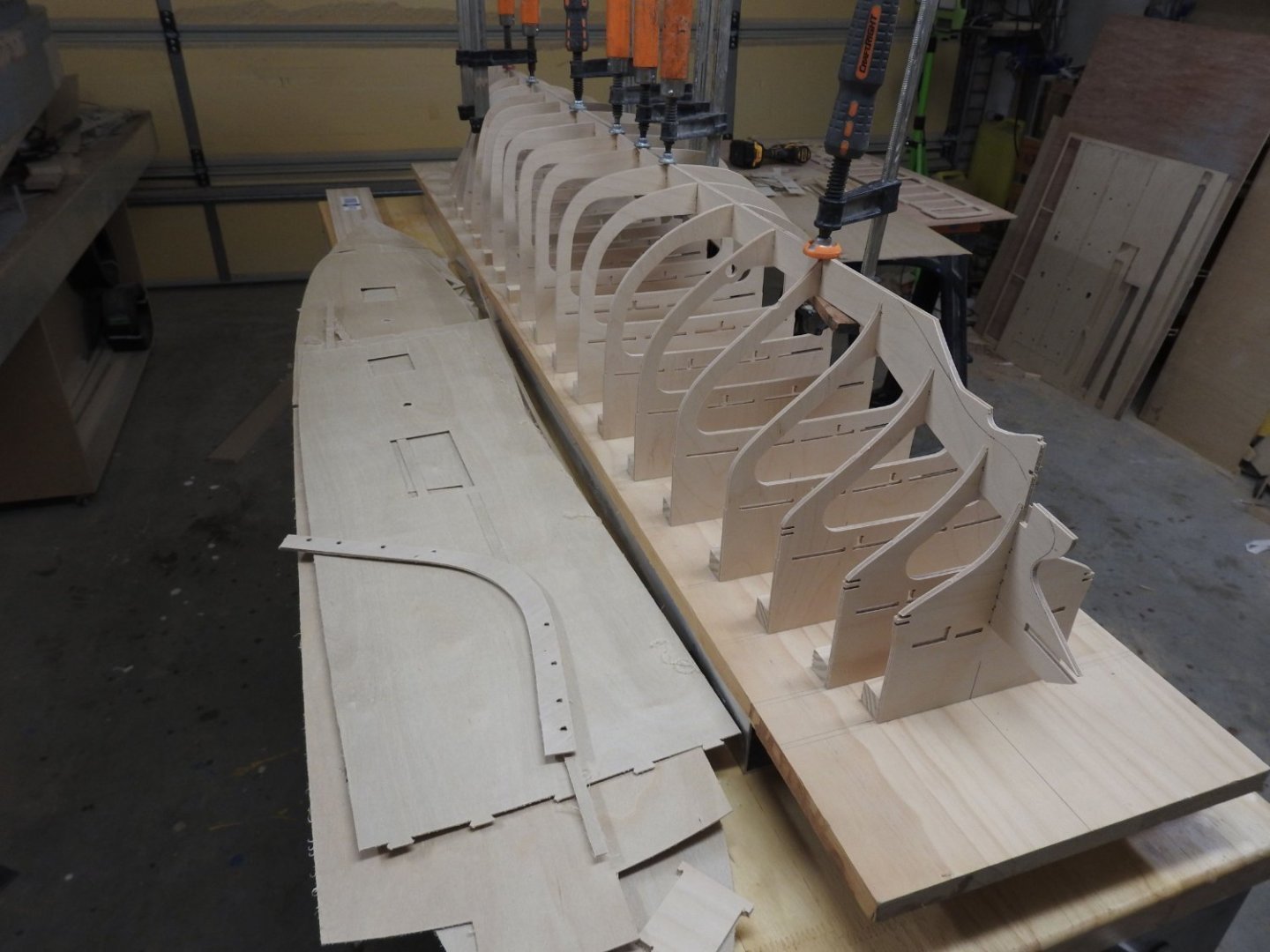
Fitted
.jpg.d01b1d56c4eb0774fdc5ec99b2cc3260.jpg)
On the TEV Wahine which is my personal project which is 4.3m long the plates are also developed with the same tool
See below, the most advanced structure I will ever do .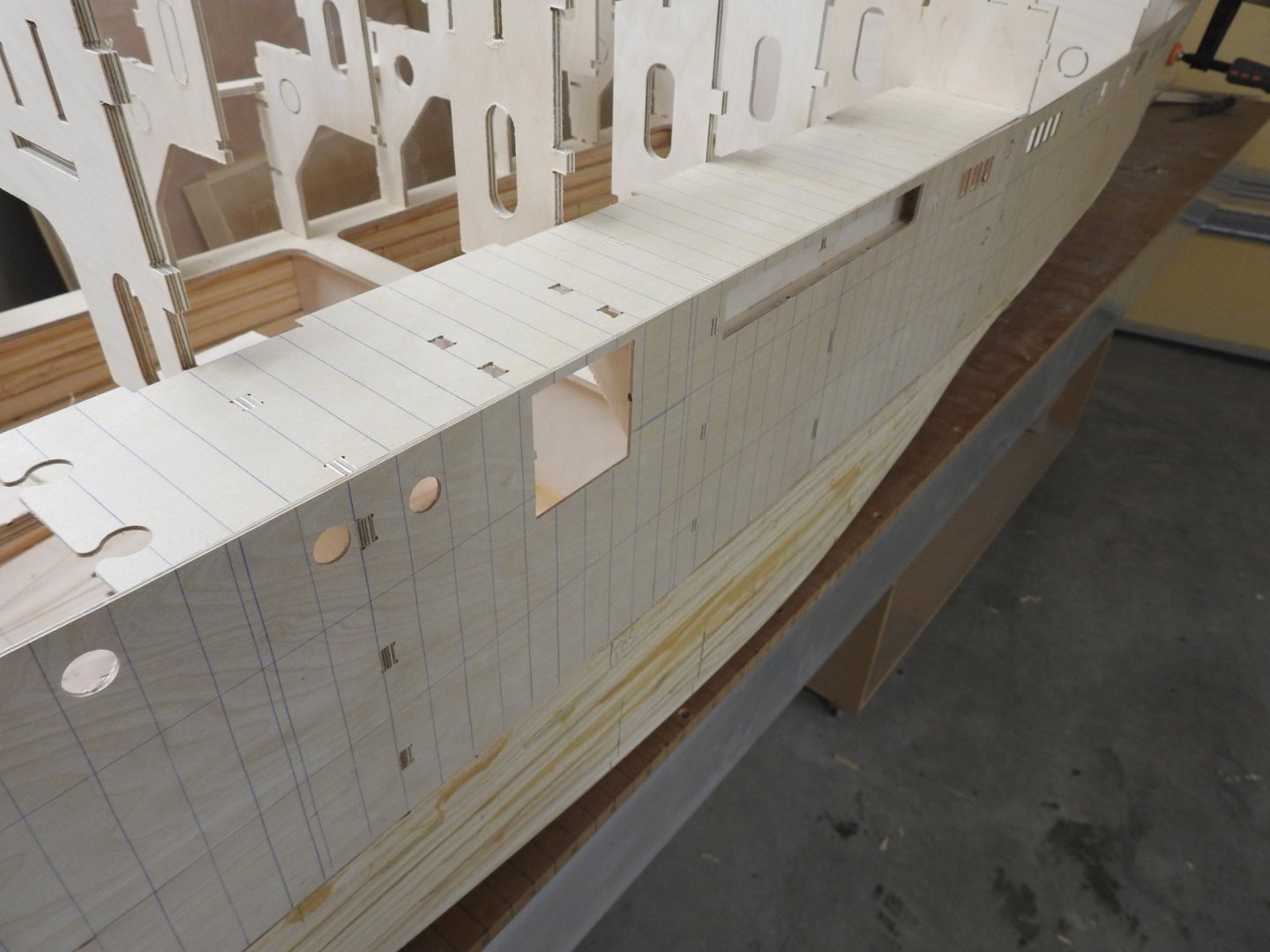
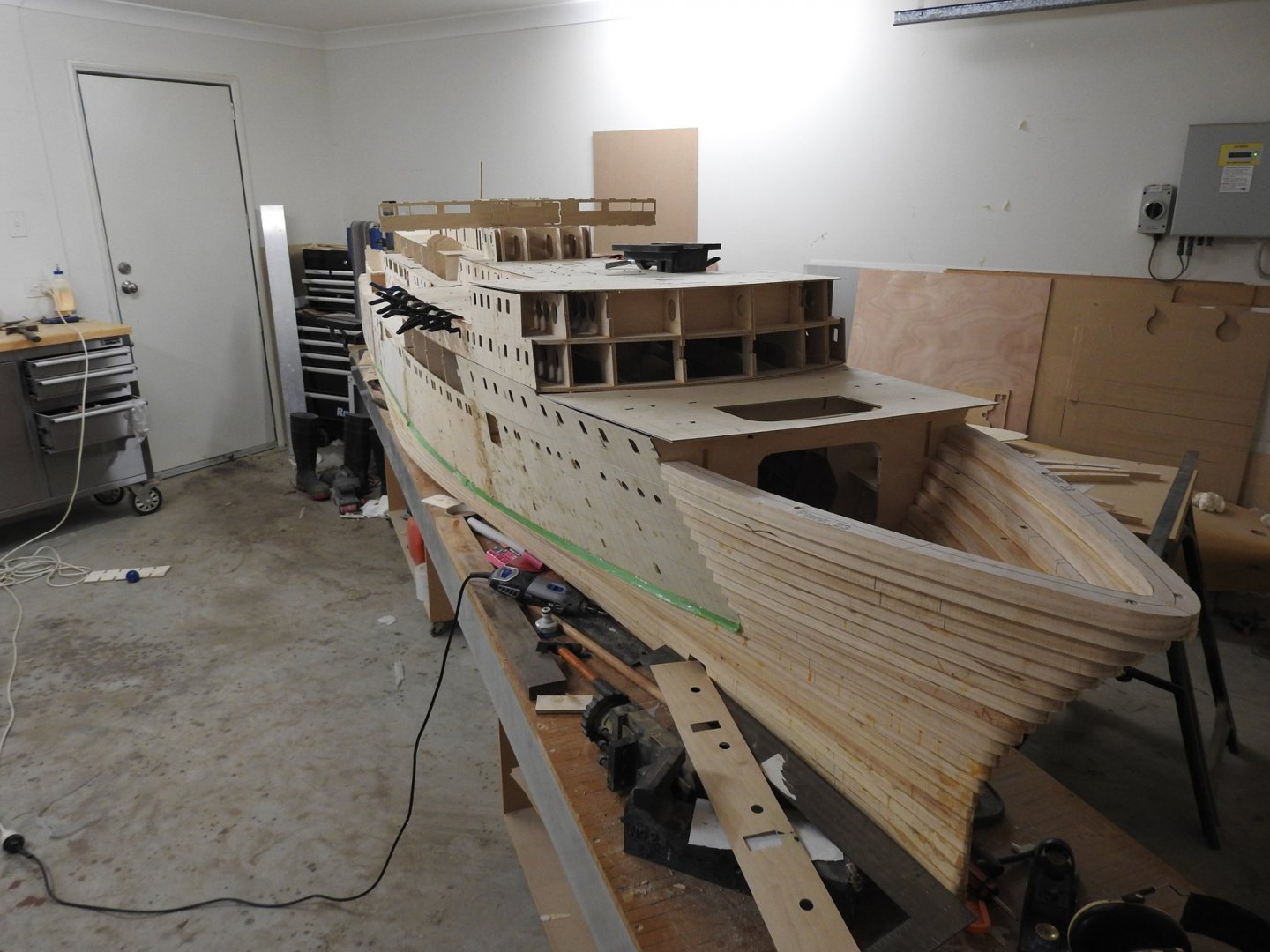
.jpg.28c4aaa99c91c9ff418616d36172d3f7.jpg)
-
I have started to clean up the parts and dry fit all the joints.
Below is the main deck, on it rest the forward half of the keel with the fore mast step and first part of the deadwood fitted.A close up of the joints showing how well they fit, notice also the fit of the dovetails joining the deck parts.
Below are the heads fitted into the slots, the stay plate slots are also shown forward of mast.
- Scottish Guy, No Idea, GrandpaPhil and 5 others
-
 7
7
-
 1
1
-
6 hours ago, rshousha said:
The inside corners of the windows might not be square, like what you come out of a laser, but that is easily rectified with a quick pass of a file.
That's right and in this case the inner panelling will need to be filed flush to the hole anyway so it has to be done, not to mention a corner from a 2mm cutter is gone in 2-3 strokes, its pretty small, the whole square hole is only 11mm.
- Scottish Guy, mtaylor and rshousha
-
 3
3
-
- Scottish Guy, mtaylor, scrubbyj427 and 3 others
-
 6
6
-
I have had great success with cutting the square mouldings which range from .65mm and 1mm wide, of course these will be cut from thinner stock or narrow planks so they can be released by running through a saw but the point is the accuracy is there. next I will try a v cutter pass first to create the bevel before applying these cuts.
Another pro for CNC, clean-up on these to remove charring would be impossible with out breaking them.The cut to the right was a test but it will actually be cut from .4mm ply, but as you can see I hit the emergency stop before it hit the screw.
below I have cut full shapes but in reality I will only be cutting the arcs, the straights will be made as separate parts with correct grain direction, maybe on the CNC as well.
The cutter used here is a .98mm end mill cutting 1mm deep in one pass
- scrubbyj427, Scottish Guy, rshousha and 1 other
-
 4
4
-
I forgot about pocketing, yes true. and carving lifeboats etc.
I am happy to provide the outlines for you if 1/40 is an option. not much difference to 1/48 in the grand scale.
For carving work I think the best example is this build, where he used small CNC for a fair bit of it. -
I can do that with the pen attachment
-
Nice
Sadly the one for my cnc is not that powerful
https://stepcraft.com.au/index.php?dispatch=products.view&product_id=344- mtaylor and Scottish Guy
-
 2
2
-
Yes you always get a radius but you cant cut anything thick with a laser which means I need both so at least CNC does both.
I need to be able to carve and machine all sort of parts, not just cut out outlines, but I did consider laser head for my cnc but yeah it only cuts to about 3mm thick material.
How thick of material will it cut?
Up to this point we have successfully cut 1/8″ balsa wood as well as a variety of paper and vinyl stock. It was not designed to cut materials much thicker than this and it will not cut denser materials like thick MDF or plastics.- Scottish Guy and mtaylor
-
 2
2
-
3 hours ago, No Idea said:
What an incredible project - I have an infinity with this ship as I grew up in South London where she is dry docked. Back in the 70's when we were kids no one - and I mean no one was interested in her. We used to skateboard around her and get free tours as it was so quiet in that area of Greenwich. Just next to her was the Gypsy Moth which was hardy looked after. Now however she is a major tourist attraction as she should be...........I consider myself very lucky to have been around at that time. Good luck with your project and I will certainly be following along.
Thankyou.
I can't help but feel interest in ships in general has been on the decline since the 80's
My dad thinks its partly due to things like Waterfront access, he used to be a prolific ship photographer and would do 1-2 trips a day to Tauranga Port to take photos, sometimes for the harbour board, but in about 2019 they stopped all that..another way to stop interest, I think its been happening a lot longer than that.
I am not sure I like the way Cutty Sark has been displayed now, in my opinion it looks crazy, the glass canopy look nothing like ocean, especially with the increase in height at bow and stern hiding her lines.
I am not convinced it will last another 50 years not without huge expenditure, I think the money could have been better spent and recouped rebuilding her as a working replica, but thats just my opinion, I am sure some people will disagree as it would not be the same thing but its a losing battle, look at the state of it now compared to 10 years ago when it reopened.The state of her iron work was so wasted away there is nothing of the original ship holding it together in places, and the way its been strengthened due to it be a historic place meant that as much of the original fabric had to be maintained, and in this case because of the way its being hung and exposed to weather still I cant see it lasting more than a few decades.
I don't know that much about HMS Victory maintenance but I get the impression they are struggling to keep that together.. correct me if I am wrong.
There was a plan to build a replica of Cutty Sark a few years ago by a Russian guy who has built 1-2 other ships and I did get approached to consult on it but I found out the design and drawing was being done by his young son and not an experienced Naval Architect, so I withdrew my support once they made it clear they did not want a professional to do it even for free, that's just seemed too dangerous risk to be affiliated with.
- mtaylor and Scottish Guy
-
 2
2
-
4 hours ago, rshousha said:
Very nice to see you are working on a CNC and not laser-cutting. CNC is so much more precise. Well done! I will follow this. Nice CAD work, as well.
Have you used laser? I am asking because so many people have advised me I should and I have considered it, what have you found with it? if you have used it.
I personally prefer the clean edges, that's really the only reason, and I purchased the CNC for guitar machining as well that was my main reason for a CNC.
Thank you for the compliment, I have been doing it for a long time in fairness.- Matt D, mtaylor and Scottish Guy
-
 3
3
-
On 11/27/2023 at 9:40 PM, Keith_W said:
The grain will be running in different directions, and it would be incredibly fragile.
What you do about this is a trick we do in guitar building for bracing Guitar tops as the members need to have maximum strength and bend resistance.
You find yourself a nice straight bit of grain and split billets off it and allow the billets to follow the natural grain run, then dress it before slicing of the strips, that way you not only eliminate grain runout but also most of the twist as well.- mtaylor, Scottish Guy and druxey
-
 3
3
-
Yeah I considered cutting the mouldings on my CNC with a .5mm end mill and will try it for sure as all the other parts of the panelling will be cut that way anyway.
The bending of the mouldings into the recesses does not concern me, I have done much harder things in my time building guitars and doing inlay work and marquetry for bindings and rosettes.I have found a really good colour match with leather dye and when applied to the cherry it is very close to the right golden brown colour I need for brightwork.
I actually think the little corner radius pieces will be the nastiest things to handle.
The build process for the fore cabin side is as follows.
The cabin carcass is clad in vertical 2mm thick cherry. then sanded with very fine paper stained and sealed .
The after this surface is smooth and final the second layer of.7mm cherry is assembled and glued to the first in this way.
Note 4 doors exist in this layer, the double panel ones.
Then sanded and repeat as above, maybe with a very subtle tonal shift to highlight the panels.Then the final layer is done from .5mm cherry
Then lastly the preformed mouldings which will have been bent into a pattern and allowed to dry will be glued and mitred into the panels, a job for the magnifying headband I think.
alternatively the mouldings will be cut on the cnc after a good tune up to remove any tiny amount of backlash.
I did cover CNC cutting of tiny window frames in my TEV Wahine Build where I cut them from .25mm styrene sheet and it did work, the only issue is the actual profile, which I really think is going to have to be just a bevel that can be cut into an edge blank before being sliced with a very fine blade in the Proxxon sawThe other parts of the ship are not as complex so have not bothered to show it but I will be doing a some tests this weekend if I get time, I need to build a vacuum bed for my CNC first, the double sided tape cost is sending me broke.
I have attached a quick elevation to show the actual size of this part. view or print at 100%
- Scottish Guy, mtaylor, GrandpaPhil and 2 others
-
 5
5
-
I wonder if I can form this with a dremel in a fence and run the profile on the edge of a strip before cutting it off with the very fine blade in my proxxon saw and then just wetting it and bending it into a jig until its dry and then fitting it into the panel.
At this size any play in the collet will ruin the moulding.Here is the profile.
- Scottish Guy, GrandpaPhil and mtaylor
-
 3
3
-

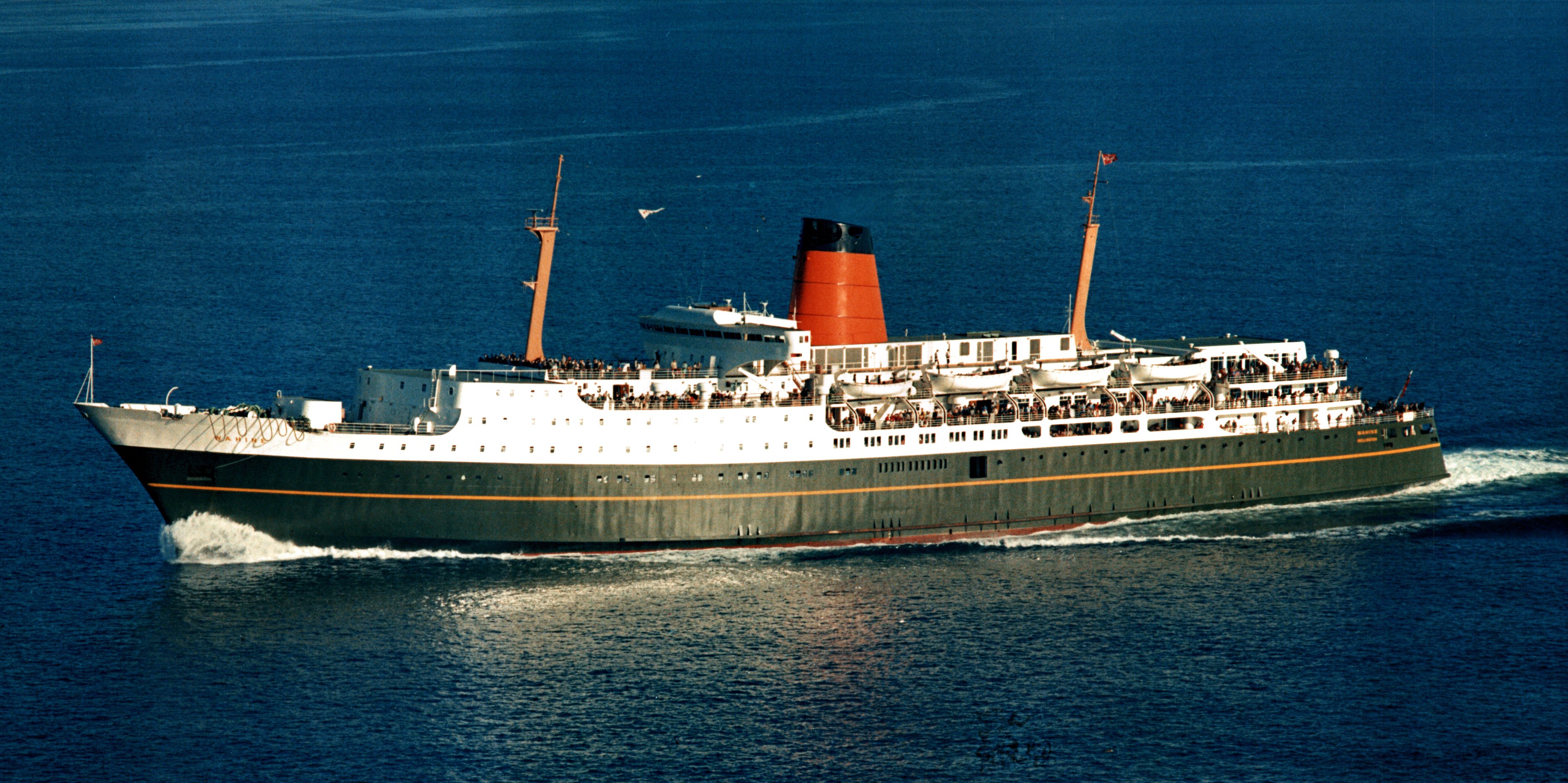
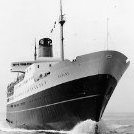
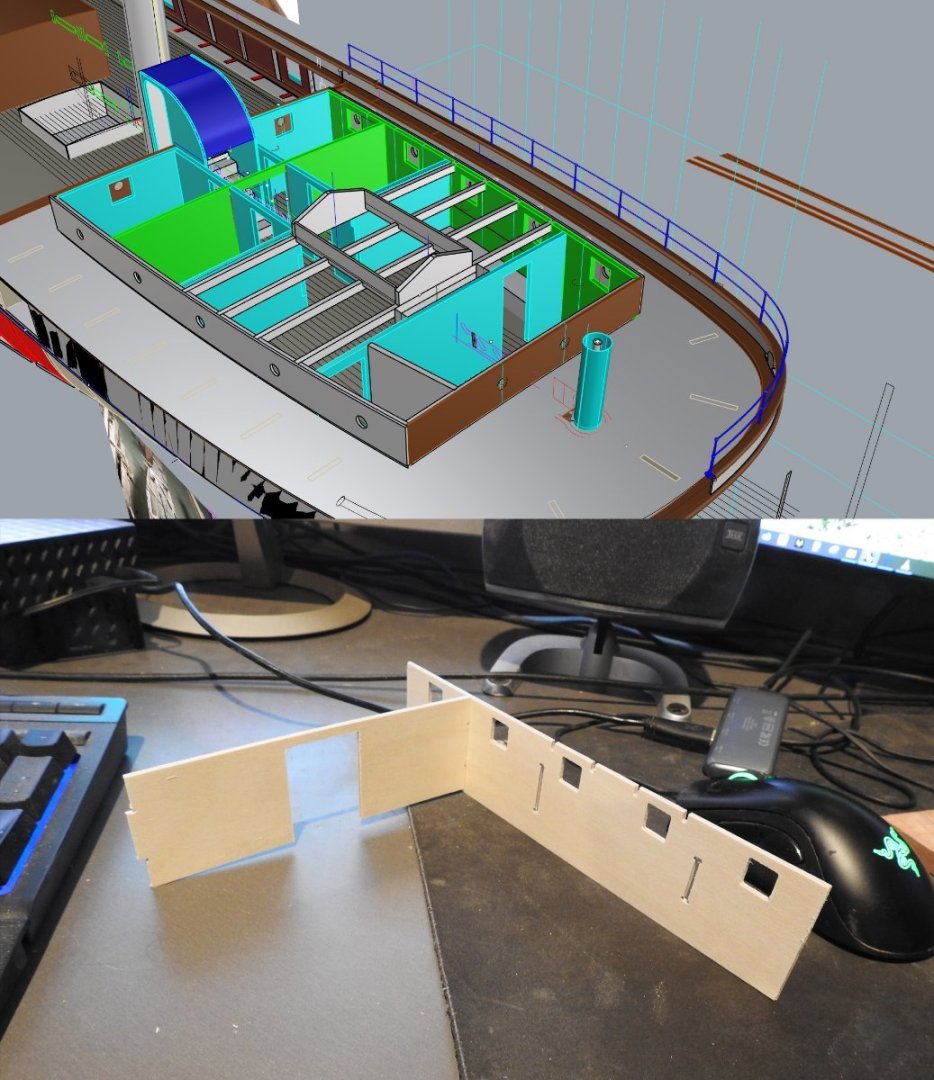
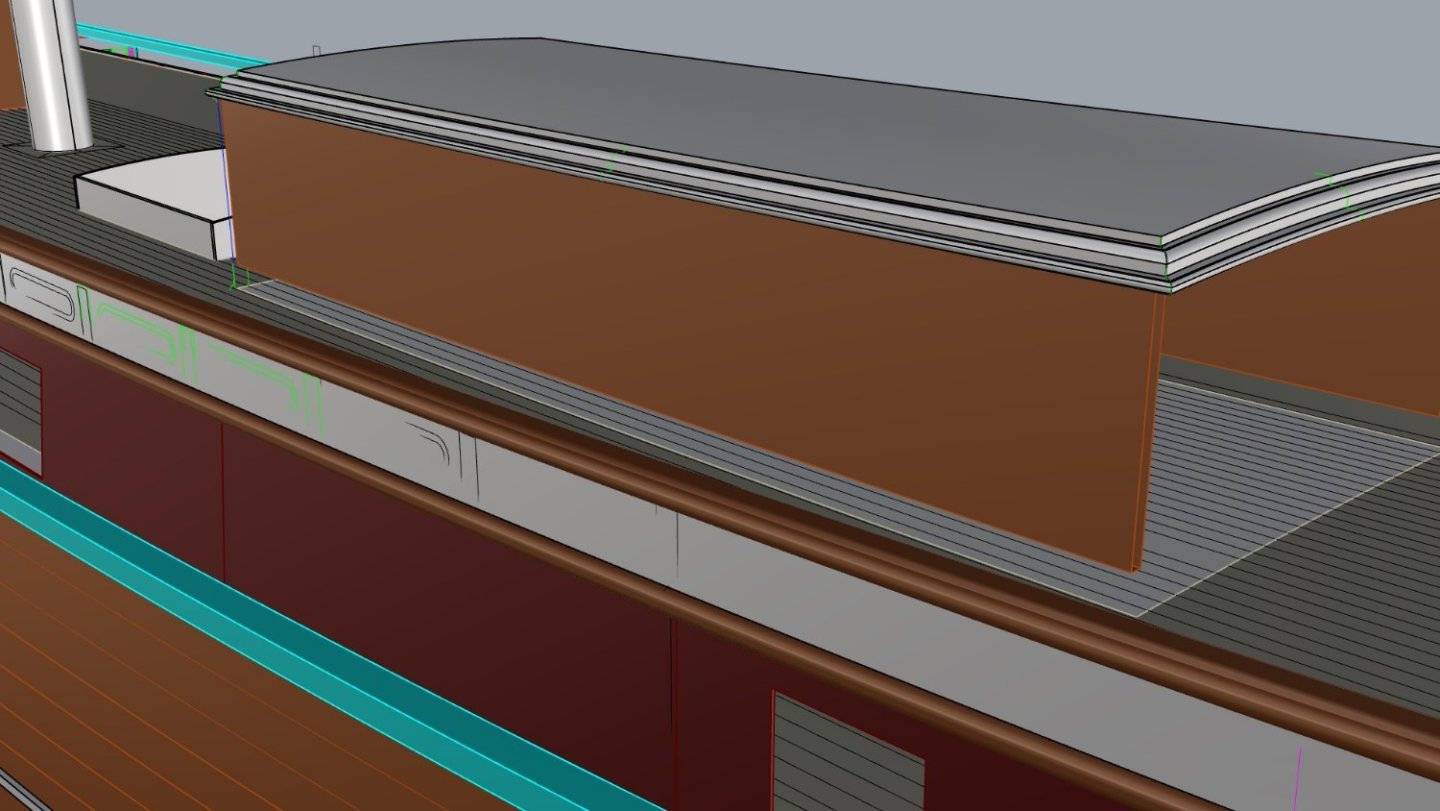
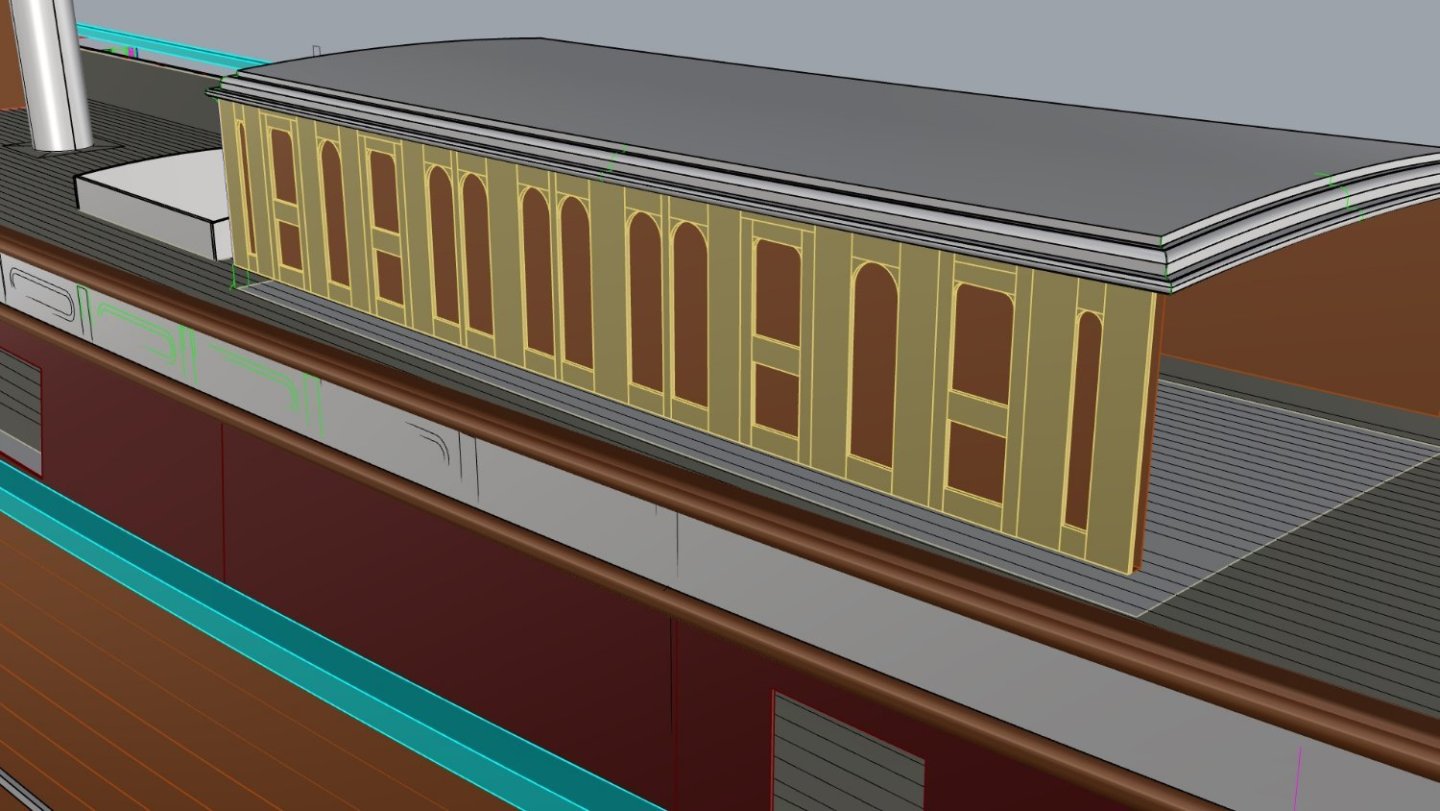
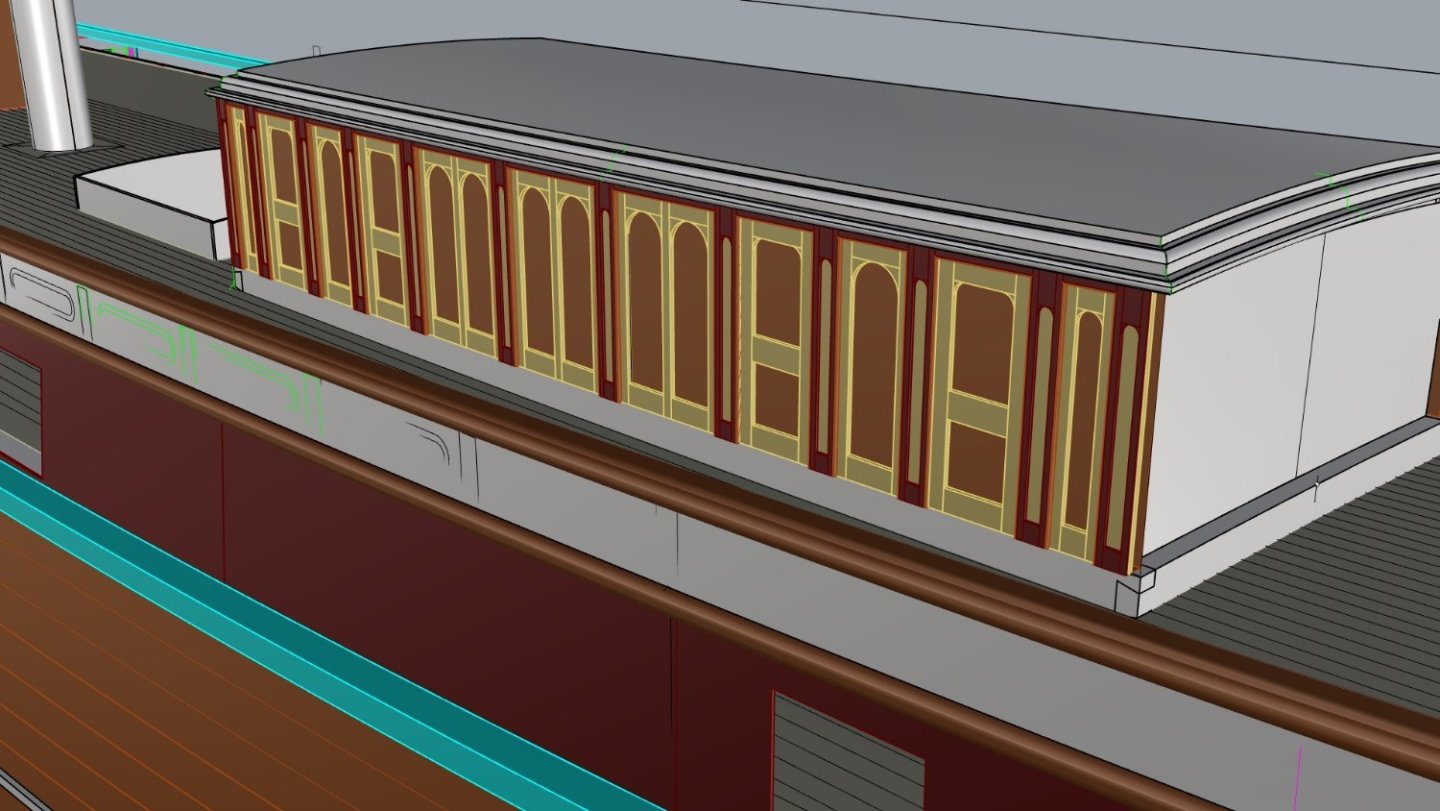
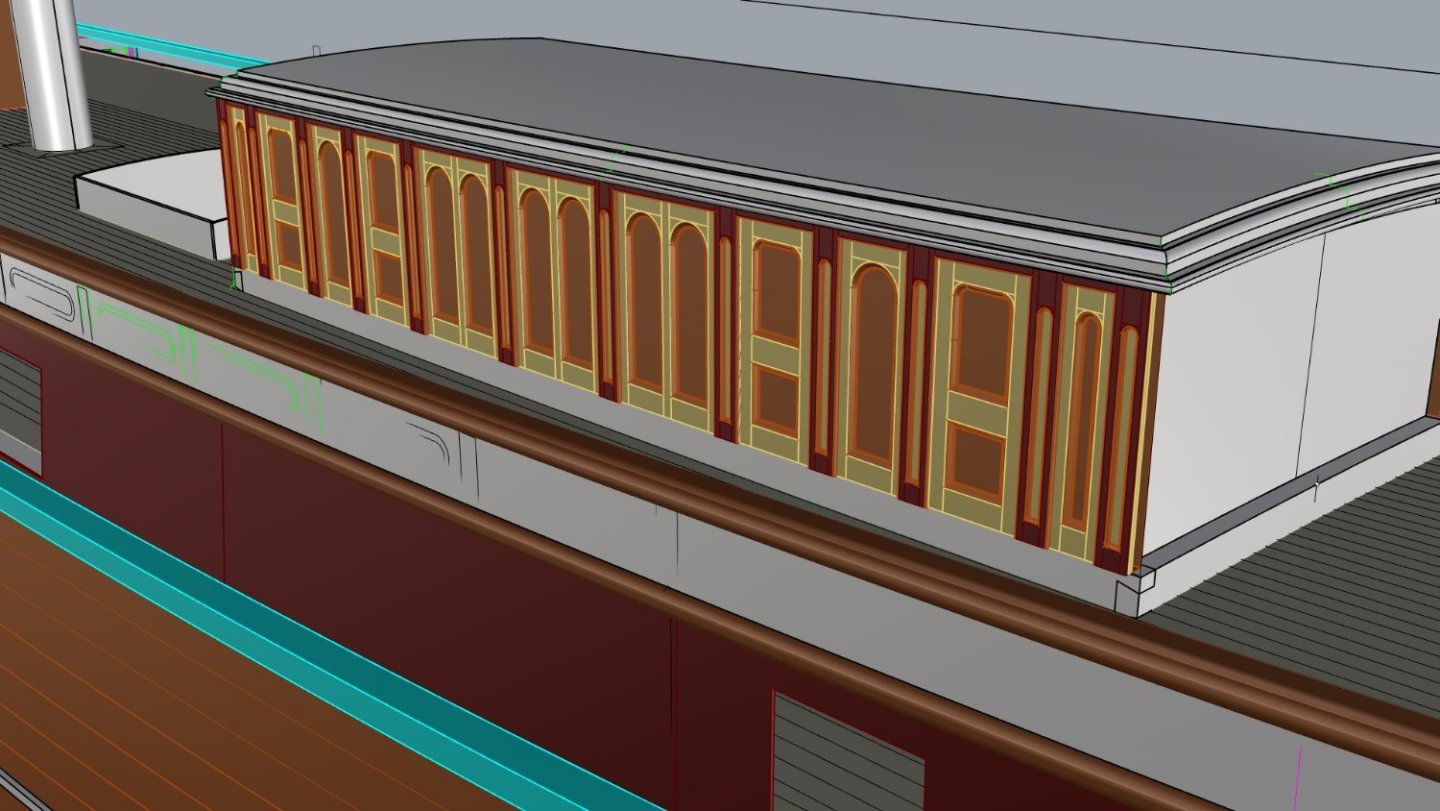
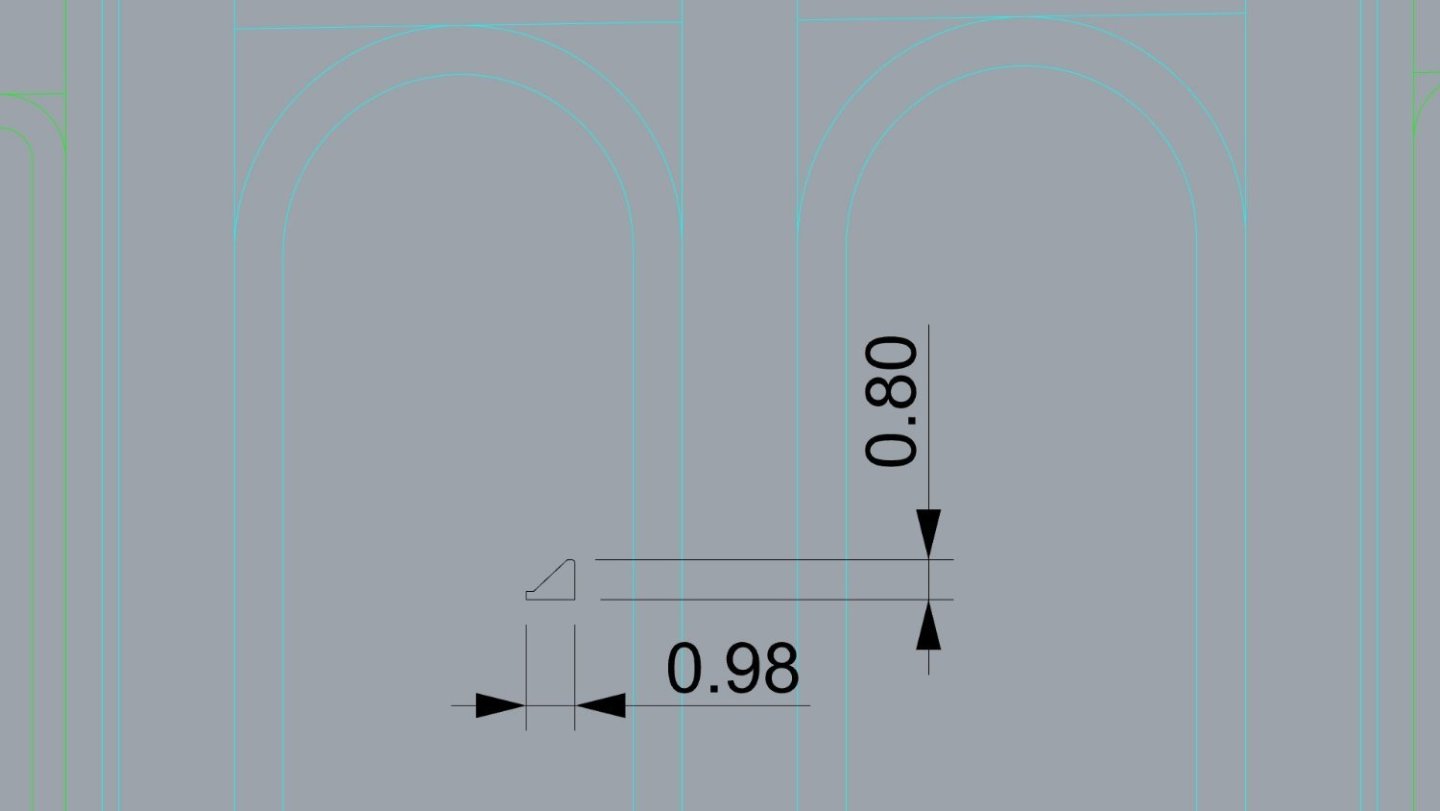
Cutty Sark by Richard Dunn - 1/40 scale - scratch built semi-kit prototype
in - Build logs for subjects built 1851 - 1900
Posted · Edited by Richard Dunn
Fairness of frames
Slots for break of poop